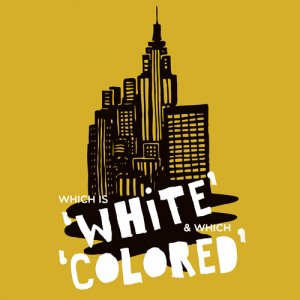Presented By: Department of American Culture
Which is 'White' and Which 'Colored'?
Notes on Race and Color Among Puerto Ricans in Interwar New York City

Some of the writings and interviews of Puerto Rican migrants settling in New York City during the interwar years of early twentieth century betray a sort of “cognitive dissonance”. This was particularly evident among those “white” migrants who struggled to explain their experiences with discrimination at the hands of other “white” New Yorkers. It seems they were registering a flux between the discourses of race and/or color circulating on the island-archipelago, and the ones they now encountered in the metropolis. There, the impulse against “racial amalgamation” had acquired some relatively fixed dimensions, with particular consequences for those whose Africanity was apparent or assumed. Growing out of the nexus between whiteness and politics, it matured into the “color-line”: a spatialization of race, labor, residence and crime which became synonymous with the very landscapes of cities like New York. For the waves of persons crowding its streets from the U.S. South and the Caribbean in the years after the First World War, this historical structure etched itself into their everyday lives. Among those Puerto Ricans residing in the area of Downtown Brooklyn at this time, it distributed them into clusters of relative color and occupational homogeneity, within and adjacent to those areas with the highest rates of arrest in the city. But the “dissonance” that this experience produced was not limited to a handful of the migrants. It is also apparent in those sources that contain narratives about or representations of race and/or color difference among those migrants. At first glance, these are often contradictory and incompatible, but a closer look suggests these discrepancies should be read as registers of the actual contingencies and the constants of that experience.
Peter L. Carlo Becerra is an adjunct professor at the Sociology and Anthropology Department at the University of Puerto Rico-Rio Piedras. He is a graduate of the Doctoral Program in Sociology at SUNY-Binghamton, where he studied with Terence K. Hopkins, Kelvin Santiago-Valles, and Dale W. Tomich. He is a Bronx born and raised Nuyorican who has resided in the Puerto Rican archipelago for well over a decade, along with his two children. He is also a graduate of Lehman College-CUNY, and the public high schools of New York City. His ruminations on the entangled character of race and/or color, space, labor, crime, and politics in historic New York, are not just academic fare. They are constructs of the “conceptual evidence” of his experiences. He is also fond of designing and teaching courses in sociological method.
This event sponsored by the Latina/o Studies Program, the Department of American Culture, the Center for Latin American and Caribbean Studies, The Department of Afroamerican and African Studies, and the National Center for Institutional Diversity.
Peter L. Carlo Becerra is an adjunct professor at the Sociology and Anthropology Department at the University of Puerto Rico-Rio Piedras. He is a graduate of the Doctoral Program in Sociology at SUNY-Binghamton, where he studied with Terence K. Hopkins, Kelvin Santiago-Valles, and Dale W. Tomich. He is a Bronx born and raised Nuyorican who has resided in the Puerto Rican archipelago for well over a decade, along with his two children. He is also a graduate of Lehman College-CUNY, and the public high schools of New York City. His ruminations on the entangled character of race and/or color, space, labor, crime, and politics in historic New York, are not just academic fare. They are constructs of the “conceptual evidence” of his experiences. He is also fond of designing and teaching courses in sociological method.
This event sponsored by the Latina/o Studies Program, the Department of American Culture, the Center for Latin American and Caribbean Studies, The Department of Afroamerican and African Studies, and the National Center for Institutional Diversity.
Explore Similar Events
-
Loading Similar Events...
